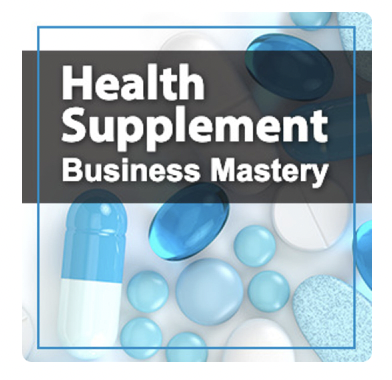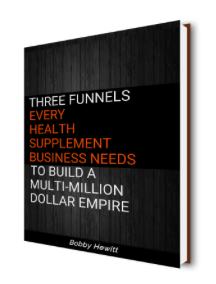The supplement industry is growing fast. But, most new business owners don’t understand how much money it really takes to start a successful supplement business. Understanding the true costs of launching a supplement business is essential for creating a ealistic business plan and run a successful business.
How Much Money Do You Really Need?
Most supplement entrepreneurs dramatically underestimate the capital required to build a sustainable business.
This reality gap often leads to premature business failure or under funding that kills growth.
Behind the numbers lies a fundamental truth. It always, takes longer and costs more than you think.
Most people think they can start a supplement business with just $10,000. The truth is you probably need at least $100,000 to launch one product if you’re very careful with your money. Having $250,000 gives you a much better chance of success. Some say supplement startups should have between $100,000 and $500,000 depending on their plans.
Remember, you need to budget not just for launch, but also to keep the business running until it starts making a profit.
Product Development and Manufacturing Costs
Product development represents a significant investment that many entrepreneurs underestimate.
Quality formulations require both time and expertise, this directly impact costs.
Minimum order requirements create another financial hurdle. Most contract manufacturers right now don’t accept orders of less than 1,000 units. So at $8-14 per unit for a quality formulations, a minimum order already represents an $8,000-14,000 investment for just one product, and that’s before considering the substantial costs of third-party testing required by platforms like Amazon.
A superior formulation directly impacts manufacturing costs. The financial difference between quality and commodity approaches is substantial. This cost difference represents not just better ingredients but often superior bioavailability, efficacy, and stability factors that translate into customer results and retention.
Initial Inventory and Cash Flow
A successful supplement business must never run out of inventory or money. This is hard because these two needs often conflict with each other. But, if you want to be in the supplement business, you can never run out of inventory and you can never run out of money. And that is not easy.
The consequences of inventory shortages extend beyond lost sales. If you have a sale that’s so good that you run out of inventory, it’s actually a bad thing, because now you have to stop the traffic, all the algorithms stop learning and you basically screwed yourself up. This algorithm disruption on platforms like Meta and Google create lasting damage that extends well beyond the stockout period itself.
Successful supplement businesses typically maintain operational reserves of six to twelve months to weather market fluctuations and growth phases.
This substantial cash cushion must cover inventory costs, marketing expenses, and payroll obligations. For a business generating $50,000 monthly in revenue, this represents a $300,000-600,000 capital requirement beyond initial launch expenses.
Inventory management becomes increasingly complex as businesses grow. Multiple products across multiple channels create forecasting challenges that require sophisticated systems and processes. Even seemingly simple strategies like offering multiple size options of successful products increase inventory complexity.
The Hidden Costs of Customer Acquisition
Perhaps no aspect of supplement economics surprises entrepreneurs more than customer acquisition costs. The costs of acquiring a customer have gotten really out of hand over the last several years, just because of more competition.
These costs are particularly high during the launch phase. You might have to pay $200 for every single new customer in the beginning of this type of business. This means that a business seeking to acquire 500 initial customers might need a $100,000 marketing budget just for initial customer acquisition before considering product costs, operations, or overhead.
The good news is that these costs typically decline over time. Be prepared for that. And over time that will go down.
This pattern creates a financial curve where initial marketing investments are extremely high, gradually declining as customer retention, referrals, and organic discovery reduce dependency on paid acquisition.
Platform economics significantly impact acquisition costs. Amazon’s built-in traffic can reduce initial customer acquisition costs but introduces platform fees and advertising requirements that affect unit economics. Direct-to-consumer models typically have higher initial acquisition costs but better margins and customer ownership. Smart supplement entrepreneurs model these tradeoffs carefully when allocating marketing budgets.
Operational Costs
Beyond product and marketing, supplement businesses require substantial operational infrastructure that adds to startup costs. Customer support represents a significant expense that many entrepreneurs overlook.
This support infrastructure becomes particularly important in categories like weight loss where customer expectations and compliance issues create higher service demands.
Shipping and handling orders is another major expense. You can hire outside companies to handle this, which is easier at first but costs more per order. Managing your own shipping saves money per order but requires space, staff, and equipment.
Order fulfillment and logistics create another cost center. Third-party logistics providers offer flexibility but add per-order costs that impact unit economics. Self-fulfillment reduces per-order costs but requires space, staff, and systems that increase fixed expenses. Most successful supplement businesses begin with third-party fulfillment to preserve capital, transitioning to in-house operations when volume justifies the fixed cost investment.
Website development and maintenance represent ongoing expenses that extend beyond initial design. Regular updates for security, conversion optimization, and user experience improvements typically cost $500-2,500 monthly depending on the site’s complexity and sales volume. This recurring expense must be factored into long-term financial planning.
Testing and compliance documentation represent significant costs that continue throughout the business lifecycle. When they came out and required ISO 9,000 labs had to test your product and we not only have to prove that what the supplement facts say is accurate, on some of our products, they require an additional test that it doesn’t contain certain contaminants. These tests cost $500-2,000 per product depending on the ingredient profile and testing requirements.
Marketing Investment Beyond Advertising
Building a supplement brand requires marketing investments that extend far beyond direct advertising costs. Content creation represents a significant expense that delivers long-term returns. This approach requires substantial investment in time.
Email marketing infrastructure becomes crucial for customer relationship management. You’ll need to pay for email software around $100-500 monthly depending on list size and possibly staff to create emails and manage your lists.
SMS systems represent another communication channel with associated costs. But SMS, is absolutely, a big time moneymaker. It’s good to have SMS with automatic replies. When they order, they get an SMS letting them know when it’s shipped. These systems typically cost $0.01-0.05 per message plus platform fees, creating another recurring expense that impacts unit economics.
Social media presence requires both platform-specific content and community management resources. This approach could require a dedicated staff member at least part-time for monitoring, responding, and fostering engagement across platforms.
The financial reality is that building an audience often precedes profitability. Many successful supplement brands invest in content and community for months or years before seeing substantial returns. This front-loaded investment creates barriers to entry but also establishes valuable assets that provide long-term competitive advantages.
Amazon-Specific Financial Considerations
With Amazon, most businesses factor platform-specific costs into their financial models. Platform fees significantly impact unit economics. Fulfillment by Amazon (FBA) typically costs $3-5 per order for average-sized supplements, plus storage fees of $0.75-2.50 per cubic foot depending on the season. These fees reduce gross margins by 15-25% compared to direct sales.
Advertising on Amazon is almost required to be visible. Most successful supplement listings spend 15-25% of their revenue on Amazon ads.
Amazon can suddenly remove products for review, sometimes for weeks or months. If Amazon is your main sales channel, you need extra money saved to survive these periods.
Amazon’s quality standards change over time, creating new costs. You might need to reformulate products, do new tests, or update documentation when requirements change.
Perhaps most importantly, Amazon-dependent businesses must maintain reserve funds for potential suspension periods. Amazon will periodically just pull a product for no rhyme or reason. And we then have to fight with them, but our product could be off Amazon anywhere from a week to two months. And if that’s your primary source of income, you’re in trouble. This uncertainty requires additional cash reserves beyond normal operating requirements.
Compliance with Amazon’s evolving quality standards creates ongoing expenses. Two years ago, when they came out and required ISO 9,000 labs had to test your product and we not only have to prove that what the supplement facts say is accurate, on some of our products, they require an additional test that it doesn’t contain certain contaminants, which a lot of products do. These changing requirements can necessitate reformulation, new testing protocols, or updated documentation that introduces unexpected costs.
Building Multiple Revenue Channels to Reduce Financial Risk
Given the risks of platform dependency, many supplement businesses invest in multiple sales channels, a strategy that requires additional capital but reduces overall business risk.
Smart supplement businesses sell through multiple channels to reduce risk.
Direct-to-consumer infrastructure represents a significant investment beyond Amazon presence. Website development, payment processing, fulfillment systems, and customer service capabilities typically require $15,000-50,000 in initial investment plus ongoing operational costs.
Different sales channels have distinct economics that affect overall business performance. Where Amazon offers built-in traffic but takes 30-40% of revenue in fees and advertising, direct sales typically cost more to generate but deliver 70-80% gross margins. Wholesale channels require less marketing investment but typically operate at 50% or higher gross margins. These channel-specific economics must be carefully modeled when allocating limited resources.
This approach requires more capital but significantly reduces existential business risk.
The most successful supplement businesses develop complementary channel strategies rather than treating each as isolated. “If you develop a really great brand and then you’re not on Amazon, all of your advertising, the people go, ‘Oh, that’s a really great idea…’ Now they go to Amazon and look for it. And when they search for that pre-workout that’s not on Amazon, guess what Amazon does. It shows them everything else.” This reality requires presence across channels to capture customers regardless of their shopping preferences.
Funding Options and Strategic Capital Allocation
Given the substantial capital requirements, most supplement entrepreneurs must look beyond personal resources for funding. Get other people’s money however you can. If you can find a business loan to start your business, do it because you need a lot more money than you think.
Seeking investors with business experience and appropriate risk tolerance. Maybe you know someone who has backed to other businesses or something like that or in your circles, there’s someone who’s a legit venture capitalist who has deep pockets and would fund your dream.
Small Business Administration loans represent another potential funding source, particularly for entrepreneurs with industry experience. These loans typically offer favorable terms compared to traditional bank financing but require substantial documentation, personal guarantees, and demonstrated industry knowledge. The application process typically takes 2-3 months, requiring advance planning before capital is needed.
Angel investors and venture capital become relevant for supplement businesses with substantial growth potential. However, these funding sources typically expect significant equity (20-40%) and growth trajectories aligned with eventual acquisition. This funding approach makes sense for entrepreneurs targeting eventual exits rather than lifestyle businesses.
Equity allocation requires strategic thinking regardless of funding source. Industry experts recommend limiting initial outside equity to 15-25% to maintain founder control while providing investors with meaningful upside. Clear agreements regarding voting rights, board composition, and future funding expectations prevent conflicts as the business grows.
Timeline to Profitability: Setting Realistic Expectations
Understanding the typical timeline to profitability helps entrepreneurs make appropriate financial plans.
A successful supplement business might follow this pattern:
- First month: Very few sales
- Second month: $15,000 in sales
- Third month: $25,000 in sales
- Fourth month: Profitable
The first month you might hardly sell anything.
The second month a little.
The third month maybe you get more traction. And if you’re lucky you get close to profit, in month 4 or 5 but not really because yoiu also have other expenses. But by month 10 you breakeven.
This four-month path to initial profitability represents a relatively successful launch trajectory. Many supplement businesses require 6-12 months to achieve breakeven operations. During this period, monthly burn rates of $20,000-50,000 are common, requiring substantial reserves beyond initial launch expenses.
Cash flow projections must account for the “valley of death” the period between launch and sustainable profitability when expenses consistently exceed revenue. This challenging phase tests both financial resources and founder resolve. If you stop too soon, you’ll never reach success either, right? It’s really about continuing little by little.
Operating reserve requirements extend beyond achieving initial profitability. Most financial experts recommend maintaining 6-12 months of expenses in reserve even after breakeven operations to weather market fluctuations, platform disruptions, or unexpected regulatory changes. For a business with $50,000 monthly expenses, this represents a $300,000-600,000 reserve requirement.
Progress measurement should extend beyond simple profitability metrics to include customer acquisition trends, retention rates, and channel diversification. These factors provide deeper insight into business sustainability than top-line revenue or short-term profitability alone.
Scaling Economics and Growth Capital Requirements
As supplement businesses move beyond initial survival, scaling introduces new financial dynamics requiring additional capital. Expanding from one product to three typically increases inventory requirements by 200-300% while introducing new marketing challenges. “We probably sold 10 million of one product before we did another product,” explains one founder about their measured expansion approach.
The cash conversion cycle in supplement businesses creates particular challenges during growth phases. With 30-60 day manufacturing lead times and 60-90 day inventory turnover, rapid growth can create cash flow constraints even in profitable businesses. Many supplement companies secure additional growth capital even after achieving profitability to support expansion without liquidity challenges.
Long-term Financial Planning for Supplement Entrepreneurs
Beyond initial launch and growth, supplement entrepreneurs must consider their long-term financial objectives. Valuation building requires attention to sustainable financial metrics including customer retention rates, recurring revenue percentage, channel diversification, and gross margin trends. These factors influence eventual acquisition value for entrepreneurs seeking exits.
For those building lifestyle businesses rather than pursuing venture-scale growth, financial planning takes a different form. This model prioritizes sustainable margins and owner compensation over explosive growth.
Family business structures introduce additional financial considerations around succession planning. This approach requires careful financial structuring to balance current owner needs with long-term transition plans.
The supplement industry offers both significant opportunities and substantial financial challenges. By understanding the true costs involved and making appropriate capital plans, entrepreneurs can build sustainable businesses that weather inevitable challenges while capturing the industry’s growth potential.
Discover the 3 funnels that can help your health supplement business succeed.

Listen to the Health Supplement Business Mastery Podcast for for dietary supplement entrepreneurs and marketers.



